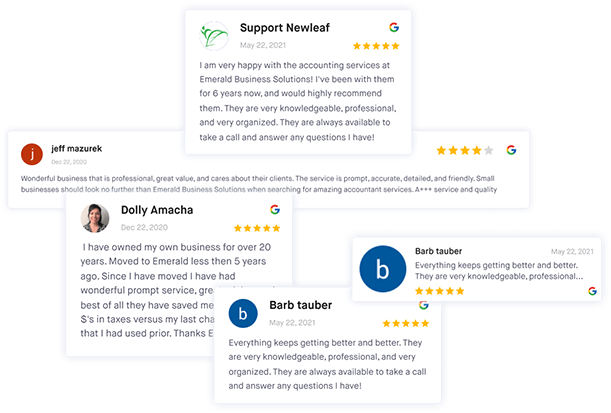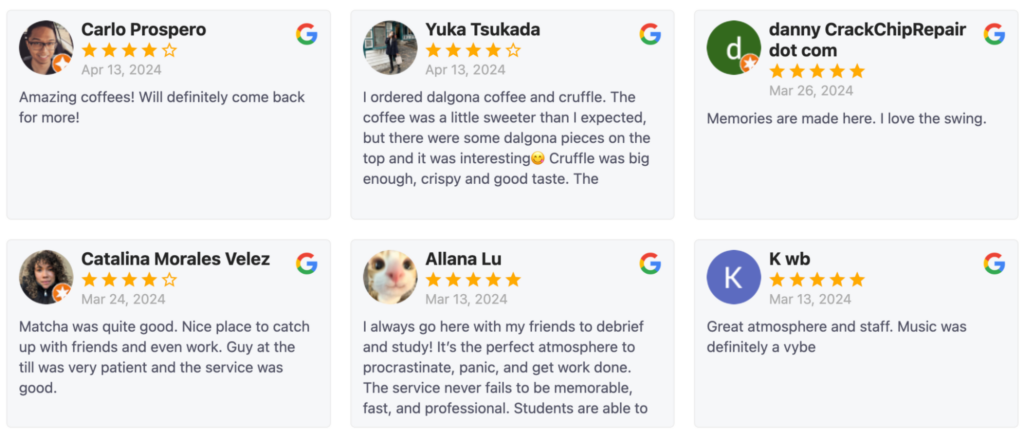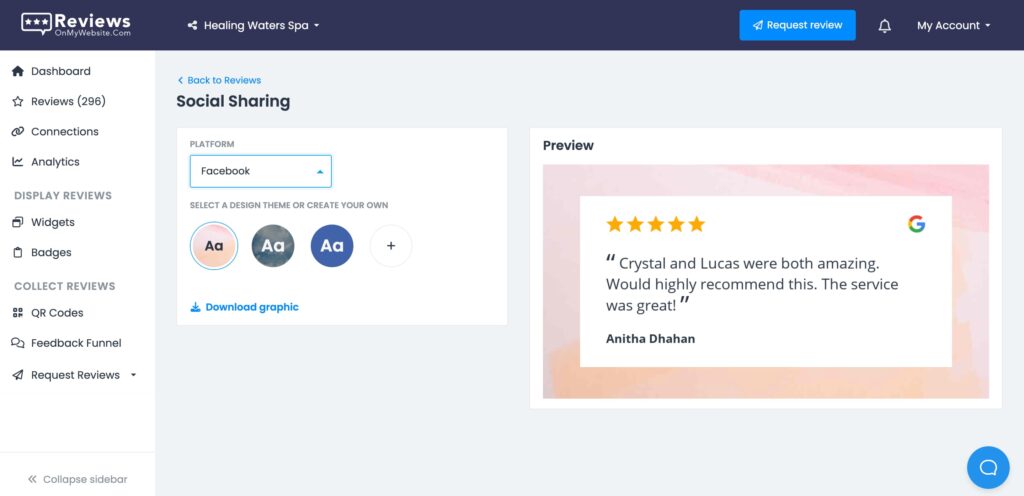Home service businesses win when customers can find, trust, and contact them in seconds.
Unlike e-commerce, your buyers often search in urgent moments: when the AC stops working in July or a pipe bursts in the basement. If your business isn’t visible and easy to reach, that job goes to a competitor.
This guide walks through 21 proven strategies that combine home services marketing with practical operations.
You’ll learn how to show up in Google results, earn reviews that influence decisions, and remove friction from booking so more calls turn into jobs.
1. Claim and Perfect Your Google Business Profile
Your Google Business Profile (GBP) is the storefront customers see first when searching for “plumber near me” or “HVAC repair in [city].”
Since 86.2% of consumers use Google to look up reviews of businesses (source), an incomplete or unverified profile means lost trust and fewer calls.
To maximize the impact of your GBP, focus on these key actions:
- Claim and verify your profile – Go to Google Business Profile Manager and complete the verification process by postcard, phone, or email. Without verification, edits won’t be published.
- Choose accurate categories and services – Set a primary category that reflects your core trade (e.g., “Plumber”) and add secondary categories for specialties like “Drain Cleaning Service.”
- Define your service area correctly – Add the cities or ZIP codes you actually serve. Overreaching can waste time on irrelevant leads.
- Upload photos and videos regularly – Post 20–30 images of your team, trucks, and projects. Short clips of your crew working build trust.
- Enable booking and messaging – Add an online booking link and turn on messaging so customers can text you directly from search.
2. Optimize Your Website for Speed, Mobile, and Easy Booking
Customers often abandon sites that load slowly or make it difficult to call. With most home service traffic coming from mobile devices, your website needs to be fast, clear, and designed for urgent decisions.
Here are practical steps to make your site customer-ready:
- Improve load speed with a site audit – Test performance with PageSpeed Insights and resolve common issues like oversized images, unnecessary scripts, or outdated hosting. Aim for a load time of under three seconds.
- Make booking frictionless – Add a sticky “Call Now” button and a simple booking form above the fold. Limit fields to essentials like name, phone, service needed, and ZIP code.
- Design for mobile-first navigation – Use large, tap-friendly buttons, easy-to-read fonts, and compressed images so users can act quickly.
- Build trust into the layout – Highlight licensing, accepted payment methods, and recent reviews directly on your homepage and service pages.

Improve your online reputation
Use ReviewsOnMyWebsite to manage and improve your home service business's online reputation with ease.
3. Earn Reviews Consistently and Respond the Right Way
Reviews directly influence both search visibility and customer trust. More than 78% of consumers won’t consider a business rated below four stars (source), and 70% expect a reply within three days.
To generate steady reviews and use them effectively, follow these steps:
- Ask for reviews immediately after the job – Train customer service representatives (CSRs) or technicians to request feedback as soon as work is complete.
- Automate follow-up with email and SMS – Set up automated email and SMS review request sequences using ReviewsOnMyWebsite to send reminders automatically.
- Make it simple to leave a review – Provide direct Google review links and keep the process under a minute. You can use our free Google review link generator to set up a review link in seconds
- Respond thoughtfully to every review – Thank customers for positive reviews and address concerns in negative reviews. ReviewsOnMyWebsite’s AI review response feature can help you generate personalized replies in seconds.
- Showcase your best reviews on your site – Add them to service and city pages with our review widget, building credibility at key decision points.

4. Improve Your Local SEO to Attract the Right Jobs
Local SEO ensures you rank in the areas and for the services that bring the most profit. Strong local presence means more qualified leads and fewer wasted calls.
Here are four proven ways to strengthen your local SEO:
Keep NAP Data Consistent
Your name, address, and phone number should match exactly across directories and listings.
Even small differences—like “St.” versus “Street”—can confuse Google. The more consistent your NAP is across the web, the stronger your authority.
Audit your citations at least quarterly to catch errors.
Target Service + City Keywords
Most customers search for home services with a location qualifier, such as “AC repair Dallas” or “roof replacement Austin.”
Build these keywords naturally into titles, headers, and content. This ensures your site matches the way real people search, improving click-through rates and conversions.
Build a “Service + City” Website Structure That Ranks
Service + city pages give you the best chance to rank in local searches. Instead of one broad services page, build multiple localized pages tailored to each service area.
Here’s how to create an effective structure:
- Create one page per service and location – Make content unique for each pairing, such as “Water Heater Installation in Denver.” Duplicate content across cities won’t perform well.
- Add local proof elements – Use reviews, maps, and project photos tied to the neighborhood. Customers should feel the page speaks directly to their community.
- Highlight CTAs clearly – Keep calls-to-action visible at the top. A phone number and booking button should be impossible to miss.
- Interlink with hubs – Connect your service + city pages to broader city hub pages or project pages. This strengthens your site’s architecture and ranking potential.
Add Local Schema Markup
Schema markup helps Google understand what your site is about. Adding LocalBusiness and Service schema can improve your chances of showing in map results and rich snippets.
You don’t need to code from scratch—many free generators exist, and you can test results using Google’s Rich Results Test.
Strengthen Internal Linking
Strong internal linking shows Google how your content relates. Connect city pages to service pages and blog posts.
For example, link your “AC Repair in Dallas” page to your “How to Spot AC Problems” blog post. This reinforces topical authority and gives visitors more ways to engage.
5. Run Google Local Services Ads for Verified Leads
Google Local Services Ads (LSAs) appear at the very top of search results with a “Google Guaranteed” badge. They are especially effective for urgent searches, often driving the first clicks and calls.
To get the most out of LSAs, apply these tactics:
Complete the Verification Process
LSAs require documentation of licenses, insurance, and sometimes background checks.
Completing this promptly ensures your ads are eligible to run. Businesses that delay verification risk missing out on high-intent leads.
Focus on Reviews for Higher Placement
Google uses review volume and quality as a ranking factor for LSAs.
Actively request reviews from every job. Automated sequences are especially useful here, as consistent review flow helps secure better ad placement.
Monitor and Dispute Leads
Not all leads are valid.
Some may come from outside your service area or from spam calls. Review your LSA dashboard weekly and dispute unqualified leads to protect your budget.
Control Your Budget
Start with a manageable budget cap and measure cost per booked job.
LSAs often provide strong return on investment (ROI), but only if you monitor results and adjust spending based on lead quality.
Vincent Carrie of Purple Media shared how his agency helped an HVAC company drive more sales through optimized Local Service Ads:
An HVAC company approached us because they were receiving a steady volume of calls, but many of those were unqualified leads requesting services outside their actual offerings.
To address this, we redesigned their Local Services Ads (LSAs), focusing on precise job type selection and narrowing their service area down to ZIP code level. We also made category adjustments to better align with their core capabilities.
In tandem with the ad optimization, we implemented a system that guaranteed under 15-second call response times. This was achieved through a trained customer service representative using pre-defined responses to quickly qualify leads and schedule appointments.
As a result of these changes, the company saw a 35% increase in lead generation, growing from 23 to 28 qualified leads per week. More significantly, their booking rate jumped from 30% to 65%.
Despite keeping their advertising spend flat, their booked revenue nearly doubled. Just three weeks into the campaign, they reported via email that they were having to turn away new customers because their schedule was fully booked.
6. Launch High-ROI Google Ads Campaigns That Convert
Google Ads allow you to capture high-intent demand beyond LSAs. With the right structure, they deliver predictable leads.
To run effective Google Ads campaigns, aim to:
- Target high-intent keywords – Focus on keywords like “emergency plumber near me” instead of broad ones like “plumber.” High-intent terms convert at higher rates.
- Use ad extensions – Add call, sitelink, and location extensions to make ads more clickable.
- Run call-only campaigns – For urgent services, these ads drive direct calls.
- Track conversions accurately – Use call tracking and import offline conversions. Without this, you won’t know which ads lead to real jobs.
7. Win Referrals Through Nextdoor and Neighborhood Groups
Nextdoor and local Facebook groups extend word-of-mouth referrals into digital spaces. Homeowners trust recommendations from neighbors more than ads, which makes these channels a low-cost, high-impact addition to your home services marketing ideas.
Follow these steps to build your presence and referrals:
Claim Your Business Page
On Nextdoor, you can set up a free business profile where neighbors can recommend your services.
Completing this profile with your name, address, phone, services, and logo ensures your business appears when people search for providers. A verified page also signals legitimacy, making residents more likely to trust you.
Encourage Recommendations
Referrals don’t happen automatically—you need to ask for them. After a successful job, remind customers they can recommend you on Nextdoor or in their local Facebook group.
Since many users browse these platforms for trusted suggestions, a single recommendation can spark multiple leads.
Engage Authentically
Nextdoor and neighborhood groups are community spaces, not ad boards. Instead of pushing offers, answer questions, share seasonal tips, and post about local involvement.
This approach positions you as a helpful resource. Over time, the goodwill you build will translate into trust and bookings.
8. Use Seasonal Content and Maintenance Guides to Smooth Demand
Demand for home services fluctuates throughout the year. Seasonal content helps you generate leads during slower months.
Here are a few ways to make seasonal content work:
- Create quarterly guides – Write blog posts like “Winterizing Pipes in Chicago” or “Spring AC Tune-Up Checklist.”
- Promote via email and SMS – Share content with past customers to spark repeat business.
- Offer seasonal discounts – Promotions tied to slower months can keep crews busy and revenue steady.
9. Produce Video That Answers Customer Questions
Video content builds familiarity and trust by showing your team, your work, and your process. For home services, this transparency helps homeowners feel more comfortable hiring you.
Here are three high-impact ways to use video:
Cover Common Objections
Many customers hesitate because they don’t understand pricing, warranties, or how a job will disrupt their routine.
Short videos explaining these points upfront reduce friction. For example, a plumber could walk through what happens during a pipe replacement, helping customers know what to expect.
Showcase Your Team and Work
Homeowners want to know who they’re inviting into their home. Recording your technicians introducing themselves or showing real jobs in progress humanizes your brand.
Even simple, unpolished videos filmed on a smartphone can build connection when they feel authentic.
Repurpose Across Channels
Don’t let video live in just one place. Upload full clips to YouTube, embed them on your website, and post shorter edits on Instagram, Facebook, or TikTok.
Repurposing maximizes reach and supports social media marketing for home services, giving customers multiple touchpoints to engage with your brand.

Improve your online reputation
Use ReviewsOnMyWebsite to manage and improve your home service business's online reputation with ease.
10. Share Local Content That Builds Community Presence
Community content strengthens brand loyalty and visibility. It shows your business cares about more than sales.
Here are three types of local content to publish:
- Spotlight local projects – Feature stories about neighborhood jobs.
- Highlight community involvement – Share posts about charity events or sponsorships.
- Leverage customer content – Encourage customers to share photos and tag your business. ReviewsOnMyWebsite’s social sharing feature makes this easy to turn into branded content.

11. Add Online Scheduling That Customers Actually Use
Online scheduling meets modern customer expectations. A smooth booking process directly improves conversion rates.
Focus on these three scheduling improvements:
Display Real-Time Availability
Static “request an appointment” forms create uncertainty.
Instead, show live availability by day or time window. Customers are more likely to commit when they see exactly when you can come. This also reduces back-and-forth phone calls.
Keep Forms Short
Each extra field increases the chance of abandonment.
Stick to essentials: name, phone, service type, and address.
If you need more details, collect them later by phone or during confirmation. A short form ensures higher completion rates.
Send Instant Confirmation
Booking confirmation should be immediate and reassuring.
Automated SMS or email confirmations reduce no-shows and give customers peace of mind. If possible, include appointment details and a link to reschedule or cancel easily.
12. Enable Live Chat and Texting to Capture After-Hours Leads
Live chat and texting let you capture leads outside normal hours. Many homeowners search in the evening, so availability matters.
To implement live chat and SMS effectively, try these tactics:
- Install a chat widget – Allow quick questions directly on your site.
- Route chats during business hours – CSRs can manage inquiries when available.
- Use AI after-hours – Collect name, address, and service details to queue for morning follow-up.
- Offer texting options – Some customers prefer SMS over calling. Make both available.
13. Set Up a Speed-to-Lead Process That Responds in 60 Seconds
Speed matters in home services marketing. Leads often contact multiple providers at once, and the first to respond usually wins the job. A “speed-to-lead” system ensures you connect with prospects in under a minute.
Here’s how to build a reliable process:
Create an SLA
A Service Level Agreement (SLA) makes fast response non-negotiable.
Document a policy that every new lead must be acknowledged within 60 seconds. This sets clear expectations and accountability for your team.
Use Routing and Auto-SMS
Technology bridges the gap when humans can’t respond instantly.
Call routing automatically forwards missed calls to the next available rep, while auto-SMS confirms receipt of online inquiries. Even a quick “Got your request, we’ll call shortly” keeps leads warm.
Train for Speed
Tools alone won’t solve the problem—your team needs to value speed.
Train CSRs and technicians to treat every new lead as urgent.
Roleplay scenarios can reinforce habits so that rapid response becomes part of your culture, not just a metric.
14. Train CSRs With Phone and Estimate Scripts That Close More Jobs
Your customer service representatives are often the first human contact a customer has with your company. Scripts provide structure so they can handle calls consistently and confidently, improving close rates.
Use these training areas to boost CSR performance:
Build a Warm Greeting
The first 10 seconds of a call set the tone. Train CSRs to greet callers by name, acknowledge their concern, and assure them they’ve called the right place. A warm, empathetic opening makes customers feel heard and reduces anxiety.
Confirm Service Area Quickly
Nothing frustrates customers like explaining their issue only to learn you don’t serve their area. Teach CSRs to confirm location early in the call. This saves time for both parties and keeps conversations efficient.
Offer Appointment Windows
Rather than asking “When works for you?”, guide customers with two specific appointment options. This makes scheduling easier and helps fill your calendar strategically. Closing the call with a confirmed time prevents drop-offs.
Train Techs on Upsell Prompts
Scripts aren’t just for CSRs—technicians should also be trained on conversational prompts. Simple checklists (e.g., “While I’m here, do you want me to inspect your water heater?”) open opportunities for upsells naturally, without pressuring customers.
15. Create a Referral Program That Rewards and Reminds
Referrals are one of the most cost-effective home services marketing ideas. They work best with incentives and reminders.
Here are three ways to maximize referrals:
- Provide small rewards – Discounts or gift cards motivate without hurting profit.
- Leave behind reminders – Fridge magnets or cards keep your name top of mind.
- Automate follow-ups – SMS and email reminders encourage referrals from past customers.
Justin Carpenter, the founder of Jacksonville Maids, shared his success with implementing a referral program:
The best way to bring in the right customers for Jacksonville Maids was our referral program.
Our regulars were already sharing good experiences, so we gave them a small discount as a thank you.
Calls from these referrals were always more straightforward, and the jobs were often in neighborhoods we wanted to target anyway. Other methods might bring more calls, but this one brought us people who already trusted us.
16. Launch Maintenance Plans That Drive Recurring Revenue
Maintenance plans stabilize cash flow and build loyalty. Instead of chasing one-off jobs, you create predictable revenue and long-term customer relationships.
When creating maintenance plans, focus on these best practices:
Create Tiered Plans
Offer multiple options (basic, standard, premium) so customers can choose the level of service that fits their needs and budget. Tiered plans also make upselling easier, since customers can see the added value of higher tiers.
Automate Renewals and Reminders
Manually tracking plan expirations leads to churn. Use software to send automated renewal reminders and invoice customers on schedule. This keeps retention high and ensures steady revenue.
Emphasize Convenience
Highlight the peace of mind that comes with membership: priority scheduling, discounted repairs, and regular tune-ups. Customers value not having to remember when to schedule maintenance—it’s taken care of for them.

Improve your online reputation
Use ReviewsOnMyWebsite to manage and improve your home service business's online reputation with ease.
17. Partner With Local Businesses, HOAs, and Charities
Partnerships expand reach and build credibility. Trusted networks often lead to steady referrals.
Consider these partnership approaches:
- Collaborate with realtors and property managers – They constantly need service providers for clients.
- Offer HOA packages – Provide neighborhood-wide discounts or contracts.
- Support local charities – Sponsoring events boosts goodwill and visibility.
18. Send Neighborhood Mailers That You Can Track
Direct mail still drives results in local markets. Tracking ensures accountability.
Here are three ways to modernize your mailers:
- Use QR codes and custom URLs – Attribute visits to each campaign.
- Add unique phone numbers – Call tracking provides lead data.
- Target job clusters – Send mailers where you recently completed work.
19. Set a Marketing Budget Based on Growth Stage and Seasonality
Without a structured budget, you risk overspending in slow periods or underspending when demand spikes. A planned budget ensures sustainable growth and stronger ROI.
These steps will help you plan smarter:
Allocate by Revenue
Most home service businesses invest 8–12% of monthly revenue into marketing. For companies in aggressive growth mode, the percentage may be higher. Tying spend to revenue keeps investments proportional to performance.
Adjust Seasonally
Seasonality matters in home services. Increase spend on PPC and LSAs during peak demand months, when competition is highest. During slower seasons, focus more on organic SEO, reviews, and referrals, which compound over time.
Measure CAC and ROI
Customer acquisition cost (CAC) shows what you spend to acquire each new customer. By tracking CAC and comparing it to customer lifetime value, you can shift money into the channels that produce the best return.
This turns budgeting into an ongoing optimization process rather than a set-and-forget exercise.
FAQs About Home Services Marketing
How can I market my home services business locally?
Start by optimizing your Google Business Profile, building service + city pages, and consistently asking for reviews.
Combine this with community involvement and local partnerships to strengthen visibility.
How important are online reviews for home service providers?
They’re critical. More than 78% of consumers won’t consider a business under four stars, and 88.3% have avoided a company after reading negative reviews (source). Reviews impact both search rankings and customer trust.
Should I use social media marketing for home services?
Yes, but treat social as a trust and referral channel rather than a primary lead source. Platforms like Facebook, Instagram, and Nextdoor are effective for showcasing projects, sharing reviews, and generating word-of-mouth.
What’s the most cost-effective home services marketing strategy?
Referrals and reviews are the most affordable, as they cost little but build long-term trust.
Pair them with targeted local SEO so you’re always visible when new customers search for services.
How much should I spend on home services marketing?
Most businesses invest 8–12% of revenue, with higher allocations during growth phases. Track CAC (customer acquisition cost) and ROI to make sure your budget goes into the channels that perform best.
Future-Proof Your Home Services Marketing Strategy
Winning jobs in 2025 requires being visible, trusted, and easy to contact in seconds. By combining digital tactics like LSAs and SEO with offline efforts like referrals and mailers, you create a marketing system that scales with your business.
Choose 3–5 strategies from this guide to implement this quarter, and track results closely. Over time, layering in more tactics will create a steady, predictable flow of high-quality jobs, regardless of the season.




